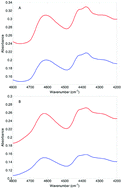Design and characterization of protein films for modeling near-infrared spectra of human tissue
Abstract
Near-infrared (near-IR) spectroscopy has been investigated for use in direct measurements of human tissue for the purpose of quantifying clinically relevant analytes such as glucose. Spectra collected by transmitting near-IR light through human tissue reveal the presence of both aqueous components and solid structures within the optical path of the measurement. Developing technology for use in making these measurements requires either the availability of human subjects or an in vitro experimental platform that can effectively simulate the spectroscopic properties of tissue. This paper describes the preparation and testing of films of collagen and keratin, the two proteins that comprise the bulk of the solid material in the human epidermis and dermis. By placing these films in the optical path of a near-IR spectrometer together with an aqueous sample cell, a phantom can be constructed that allows experiments to be performed that simulate noninvasive measurements of tissue. In this work, both constant and variable thickness films are prepared and evaluated by use of a regression fit to spectra of human tissue. The stability and spectral reproducibility of the prepared films are also assessed. The regression fits to the human subject spectra yield values of R2 ranging from 0.97 to 0.99 and the films are found to yield spectra that vary by less than a 2% relative standard deviation under three different reproducibility tests.


 Please wait while we load your content...
Please wait while we load your content...